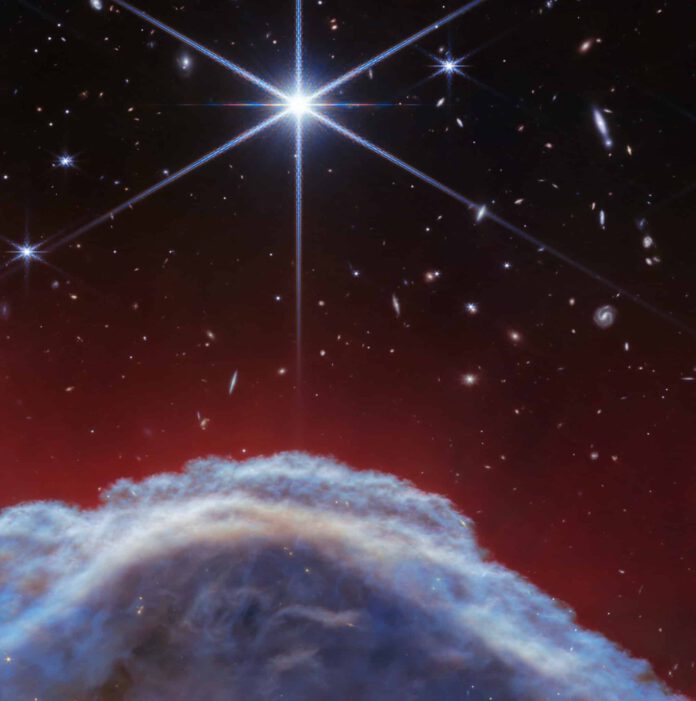
The Horsehead Nebula: An Unparalleled Spectacle in Outer Space
The Horsehead Nebula stands out as one of the most distinctive features in the constellation of Orion. Capturing its qualities even with the most sophisticated telescope can be a challenge. Nevertheless, James Webb was able to map out this dark nebula, unveiling its intricacies in an unmatched level of detail.
Unearthing the Mysteries of Orion
New photos taken by Webb unveil a section of the universe within the Orion constellation, also known as ‘the hunter.’ The capture encapsulates the western side of the Orion B molecular cloud. From this turbulent sea of dust and gas emerges the Horsehead Nebula, also recognized as Barnard 33, set approximately 1300 light-years away from Earth.
Anatomy of the Horsehead Nebula
The nebula came into being when an interstellar cloud of matter collapsed. It glows as it is lit up by a nearby hot star. The cloudy aura surrounding the Horsehead has vanished, leaving behind a protruding pillar constructed from thick chunks of material that have withstood erosion. Astronomers estimate the Horsehead Nebula will persevere for another five million years, before it eventually disintegrates. Webb’s fresh images primarily highlight the illuminated edge of the nebula’s distinctive dust and gas structure.
What is a Photodissociation Region (PDR)?
The Horsehead Nebula serves as one of the most famous photodissociation regions (PDRs). In such regions, the ultraviolet light emitted by massive, young stars yields a largely neutral, warm domain of gas and dust. These stars have a far greater density than our sun. The astounding amounts of energy they release superheat the surrounding material and induce chemical reactions. This process forms a shell of fully ionized gas around these stars and the clouds of their genesis. The ultraviolet radiation plays a vital role in shaping the gaseous formations in these regions and is the primary source of heat.
The Penetration of Ultraviolet Light
This phenomena happens when the interstellar gas remains dense enough to stay neutral but not dense enough to prevent the infiltration of ultraviolet light from massive stars. The light transmitted by these PDRs affords us a beautiful representation of the physical and chemical procedures driving the evolution of interstellar matter across various locations in the universe, including our own Milky Way galaxy. These processes have been occurring for billions of years and continue to evolve to this day.
A Cosmic Laboratory for Astronomical Studies
Owing to its relative proximity and its stunning geometry, the Horsehead Nebula offers an ideal target for astronomers to investigate the physical structures of PDRs, the evolution of the chemical properties of cosmic gas and celestial dust, and the transition zones between them. Astronomers consider it one of the finest celestial bodies for learning more about how radiation and interstellar matter interact with each other.
Detailed Structures Revealed
Webb is the largest, most expensive, and most powerful telescope that humanity has ever sent into space. Thanks to the groundbreaking technology of the Webb telescope, an international team of astronomers managed to expose for the first time, the small-scale, detailed structures of the Horsehead’s illuminated boundary. They have also discovered crisscrossed networks of structures stretching perpendicular to the PDR front. Surprisingly, these structures contain dust particles and ionized gas, seemingly swept up in the wake of the nebula’s evaporation.
Moving Forward: Spectroscopic Analysis
The scientists are now planning to examine the spectroscopic data of the nebula. Their aim is to learn more about the evolution of the physical and chemical properties of the observed material in the Horsehead Nebula, through an analysis of substances according to their electromagnetic spectrum.











